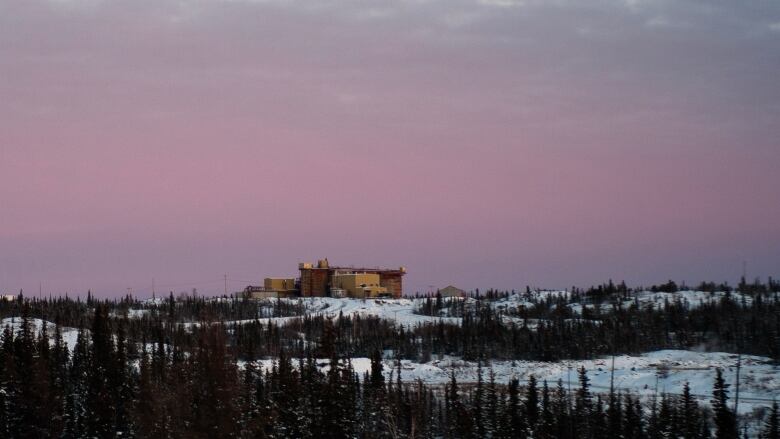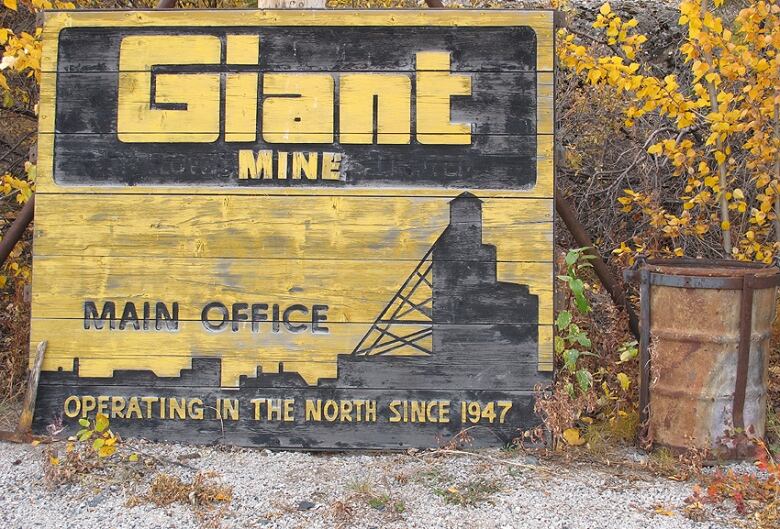How much will the $1B Giant Mine cleanup benefit northerners?
Only 23 per cent of workers were from the North and 4 per cent were Indigenous in 2016-17

Though environmental concerns dominated a public meeting on the $1 billion cleanup ofGiant Mine in Yellowknife this week, some questioned how much northerners, and particularly Indigenous northerners, are benefiting from the project.
In its 2017 annual report, the Giant Mine Oversight Boardpointed out thatthe federal government spent $40.3 millionon work at Giant Mine in 2016-17, but only 23 per centof workers were from the Northand only four per centwere Indigenous, a drop from the previous year.
The board called on the federal team overseeing the cleanup to speed updevelopment ofa socio-economic strategy aimed at maximizing Northern benefits.
At Tuesday's public meeting, others pointed out that with several northern diamond mines nearing closure, the cleanup is going to become even more important to the local economy.

"For over a decade I've seen P3 (public, private partnership) projects whether federal or territorial where the project is given to a company in the South and the majority of the workers are people flown from the South to work in the North," said David Bob, president of the Northern Federation of Labour.
Bob said it's evident from recent projects in Inuvik such as construction of the Inuvik-Tuktoyaktuk highway and the tear down of two schools that projects can be completed with an almost entirely northern workforce.
- PHOTOS |Demolition of Samuel Hearne Secondary School in Inuvik
- VIDEO | Inuvik'sSir Alexander Mackenzie school demolished
- PHOTOS |Inuvik, N.W.T., says farewell to two schools
Oversight Board member Ginger Stones said communities have a role to play in maximizing northern benefits "by identifying what it is in the way of training, what it is in the way of opportunities that people are looking for."
The team overseeing the remediation has commissioned a study of training and expertise among Indigenous people in the area.
But William Lines of the Yellowknives Dene First Nations lands management office said there hasn't been nearly enough work done.
"When that study was done they only went to a select few people in the community of Ndilo and we've asked on numerous occasions to come back and do community engagement sessions and to speak to the community as a whole and to do a much more comprehensive study," said Lines.
"We deem that study as incomplete."
Public concerns 'loud and clear'
The federal official leading the cleanup said all contracting and sub-contracting for work at the mine includes targets for Indigenous hiring and business opportunities for Indigenous people in the region.
"We certainly have heard loud and clear from the public that we need to do some work on this, and we are doing that," said Natalie Plato. "And we will be coming back at a public meeting in June and coming forward with some new approaches and strategies to make sure we maximize those benefits."
The bulk of the work on the project will happen after the Mackenzie Valley Land and Water Board issueda water licence for it. The project team is anticipating getting that licence and beginning that work within about 18 months.
Earlier this year, Parsons Inc., a U.S.-based multinational was awarded a $32 million contract to be construction manager for work at Giant Mine for the next two years.












_(720p).jpg)


 OFFICIAL HD MUSIC VIDEO.jpg)
.jpg)



























































































